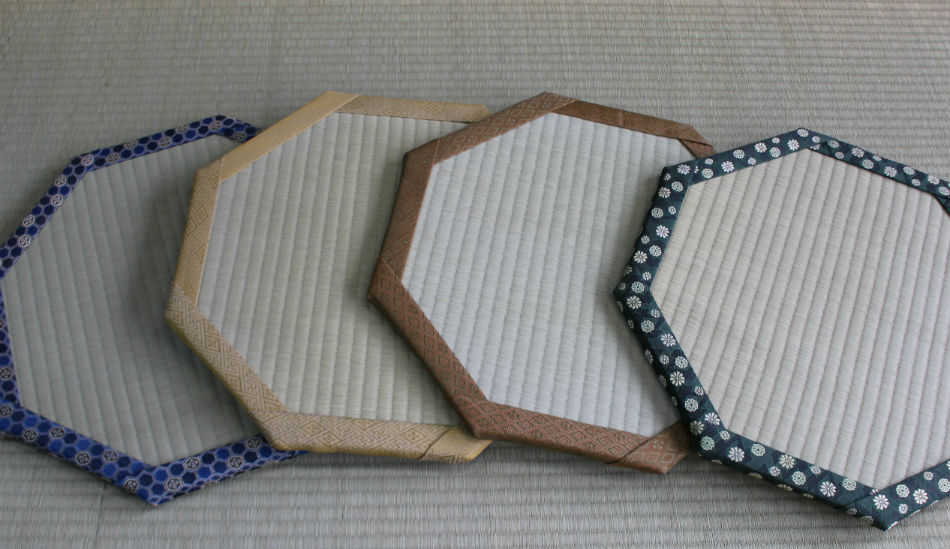As I thought, Tatami (straw mat) relaxes us 〜(* ´ ω ` )
Published: September 28, 2017
Entering the studio of Mr. Yasuo Morita, I found him hard at work, focused on tailoring and cutting a raw tatami mat.

“The handicraft of tatami mats is a family business. I’m actually the third generation member to work in the family studio.” Mr. Morita learned the tatami mat craft from his family. It’s an ancestral knowledge transmitted from generation to generation. Currently, Mr. Morita works alone in his studio and says the work is not lacking.
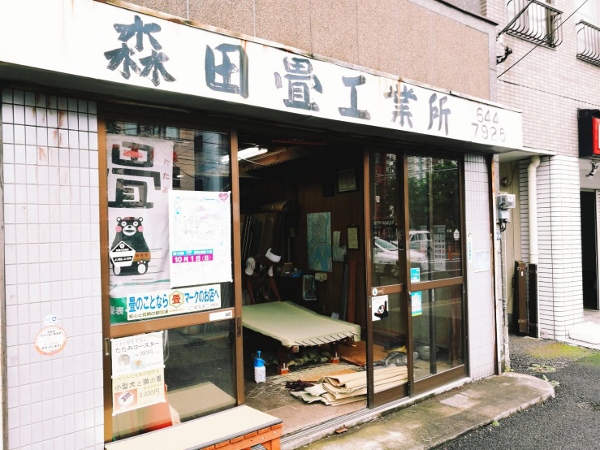
Located in the Minamisuna area of Koto City, Mr. Morita works essentially for private customers who want to install some tatami mats in a room or restore the ones they have at home. “This is what I like about this profession: making people’s houses beautiful with tatami mats.” Sometimes, he also receives orders from traditional Japanese restaurants where you can sit in a tatami mat area. But according to Mr. Morita, such places are regrettably disappearing slowly.
What is tatami mat?
The tatami mat is traditional Japanese flooring made using rice straw. The word “tatami” means literally to “fold” or “pile”. The size of a tatami differs between different regions of Japan. In Tokyo, the tatami generally measures 0.88m by 1.76m. The size of a traditional Japanese room is often measured by the number of “jô” which is about 1.653 square meters, or one tatami mat. Today the biggest tatami mat factories in Japan are located in Kumamoto.
“Having a room with tatami mats at home is good for the health,” declared Mr. Morita. He showed me a scientific research article which demonstrated that studying in a classroom with tatami mats on the floor enhances students’ performances, increases their results, and promotes relaxation and quietness.
Mr. Morita’s main activity is to prepare the raw tatami mats he bought at the factory, making sure they’re of the right size and giving them their traditional aesthetic. After cutting the edges of the mat and hiding them with an aesthetic hem, he goes to install them in his customers’ rooms.
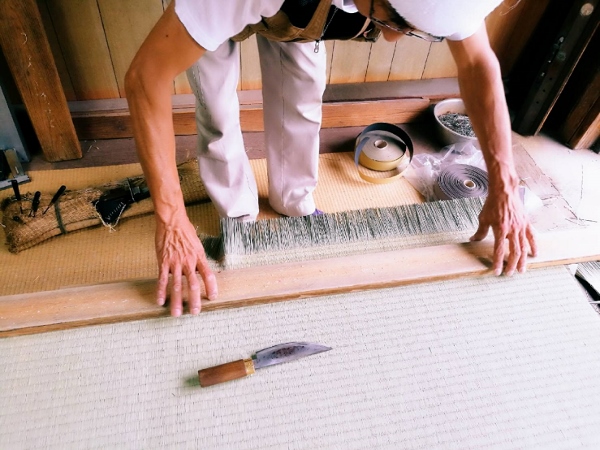
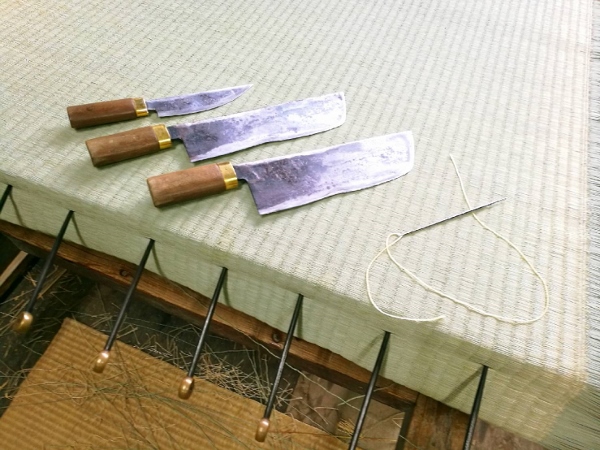
These are the main tools used by Mr. Morita.
Mr. Morita makes also other goods using tatami like small beds for pets and drink coasters, which will surely be an authentic and original Japanese souvenir to bring back in your luggage.
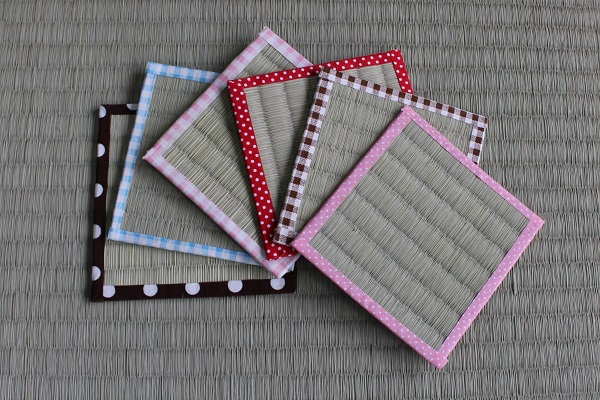
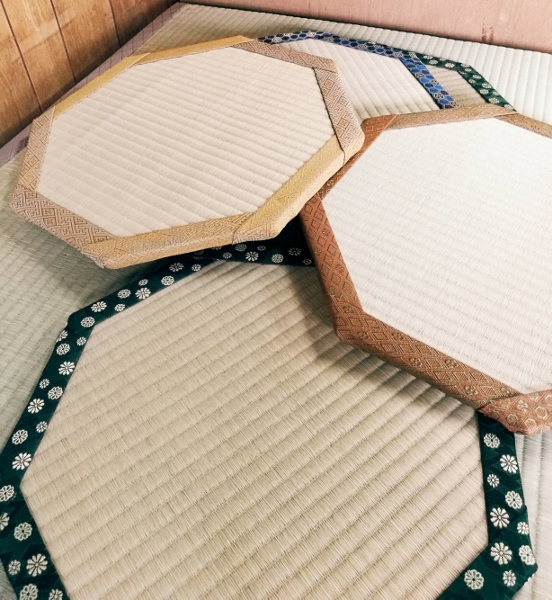
Mr. Morita offered to let me make my own tatami mat drink coaster.
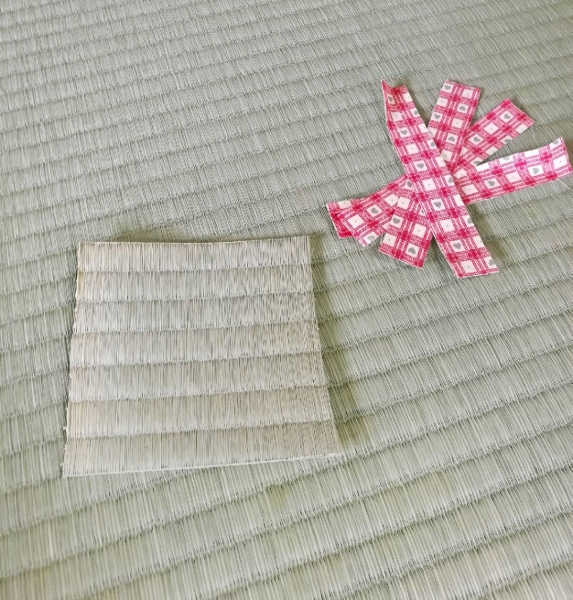
What you need to make one is a piece of tatami mat and some tape for the hem.

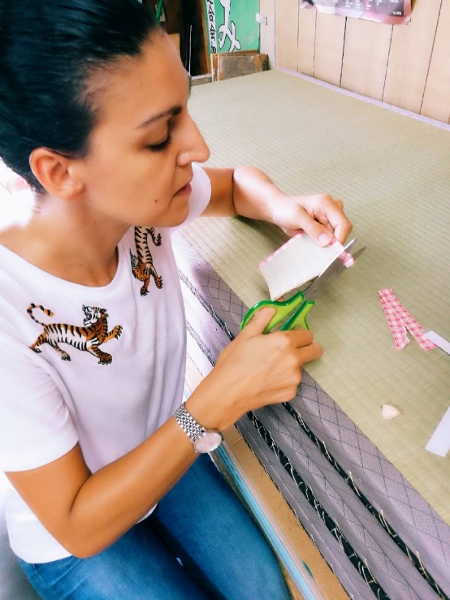
It’s very important to be precise whilst attaching the hem and cutting them to obtain the perfect result.
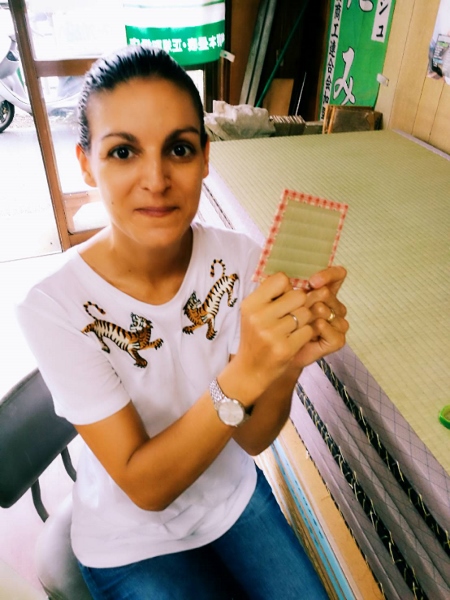
Here it is! This will certainly impress my friends when they visit me the next time.
Discovering the richness of the tatami craft was a really authentic experience for me. Loved by the Japanese but also by foreigners residing in Japan and by tourists, the art of tatami offers better comprehension into the beautiful savoir-faire of the Japanese handicraft. And above all, don’t forget to remove your shoes when you walk on a tatami mat in order to respect this wonderful and fascinating material!
Story and Photos by Aline Lambelet

